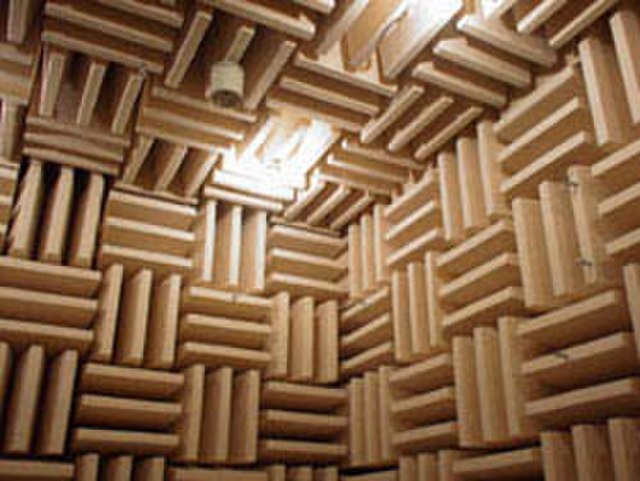Architectural acoustics is the science and engineering of achieving a good sound within a building and is a branch of acoustical engineering. The first application of modern scientific methods to architectural acoustics was carried out by the American physicist Wallace Sabine in the Fogg Museum lecture room. He applied his newfound knowledge to the design of Symphony Hall, Boston.
Symphony Hall, Birmingham, an example of the application of architectural acoustics
Ceiling of Culture Palace (Tel Aviv) concert hall is covered with perforated metal panels
An anechoic chamber, using acoustic absorption to create a dead space.
Acoustical engineering is the branch of engineering dealing with sound and vibration. It includes the application of acoustics, the science of sound and vibration, in technology. Acoustical engineers are typically concerned with the design, analysis and control of sound.
The transparent baffles inside this auditorium were installed to optimise sound projection and reproduction, key factors in acoustical engineering.
Disney's Concert Hall was meticulously designed for superior acoustical qualities.
Ceiling of Culture Palace (Tel Aviv) concert hall is covered with perforated metal panels
At outdoor concerts like Woodstock, acoustic analysis is critical to creating the best experience for the audience and the performers.






